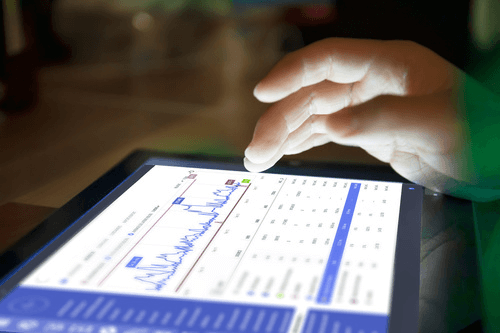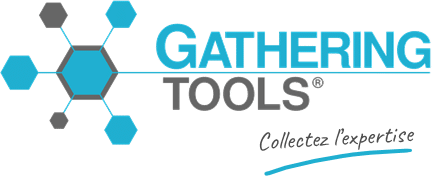Sales forecasting is one of the core responsibilities of sales directors.
Their ability to anticipate results with accuracy and reliability is a highly valuable asset for their company’s performance. On the other hand, a director who consistently provides unrealistic or inaccurate forecasts risks seeing their role—and potentially their career—cut short.
Of course, not everyone is a fortune teller… and even a crystal ball wouldn’t be of much help here. Delivering relevant figures is no easy task. In reality, forecasting sales means modeling customer behavior and navigating the complexity of markets—both of which require structured, data-driven approaches.
In this article, we’ll explore the main obstacles to building reliable forecasts—and, more importantly, how to overcome them.
Collaborative Data Collection & Sales Forecasting: The Challenge That Changes Everything

Most sales directors limit themselves to producing forecasts on a quarterly—or even semi-annual—basis.
But why not increase the frequency?
Because the process is so tedious that the idea of generating forecasts every month, or even weekly, feels unthinkable. Yet, to produce high-quality sales forecasts that truly support both strategic and tactical decision-making, multi-level reporting is essential. This means collecting large volumes of field data from a wide range of sources, collaborating with commercial management controllers, consolidating and integrating inputs, and more. In short: long hours spent working in Excel spreadsheets. And it’s far from enjoyable, as one of our retail clients, an IT Director, explained:
“For our sales forecasts, Excel pulls data from several applications—our ERP, store management systems, and the data warehouse.
But we face multiple issues with Excel files. Collaboration is difficult because we don’t always use the same data references.
On top of that, it’s hard to rework or reuse the macros and formulas. As data volumes keep growing, these problems get worse.
We’re finding it increasingly difficult to make precise, detailed forecasts. Finally, there’s the issue of dependency—very few people have the skills to maintain or evolve these complex files.”
One of the most time-consuming steps in the forecasting process remains data collection.
Asking all sales managers—across subsidiaries, agencies, or other entities—to fill out Excel files within a set deadline can feel like running an obstacle course.
The result? Endless follow-ups to get the data on time, multiple versions of the same file, and inconsistent data—even with macros in place to lock fields and reduce errors.
So, how can this be improved?
The answer lies in using an application that looks and feels exactly like Excel—but reliably streamlines the data collection process.
Gathering Tools allows you to replicate the familiar spreadsheet interface (so you don’t “disrupt” the contributing sales teams), while introducing real collaborative features.
Sales forecasting users can track the progress of submissions—both overall and entity by entity, depending on their access rights.
They can also validate or reject entries, request corrections, and send notifications—all from within the tool.
Data Consolidation and Sharing with Sales and Other Teams

After data collection comes the consolidation and reporting phases—but unfortunately, they’re not exactly stress-free either.
Consolidating dozens of complex Excel files while ensuring data consistency is far from straightforward.
Once again, Gathering Tools helps address this challenge. The platform allows you to prevent the submission of incomplete files and set up rules to authorize or restrict the addition or removal of records, all while verifying data consistency.
The files are then directly synchronized with the information system, ensuring that everyone—across teams—has access to a single version of the truth.
Now that sales forecasts are consolidated, the next crucial step is sharing them—after all, that’s the main purpose of the entire process.
Of course, this doesn’t mean handing over an unreadable and partially editable spreadsheet.
The ideal approach is to present the collected data using clear and tailored data visualizations, depending on the audience: executive management, finance, production, logistics, procurement, etc.
This again requires perfect synchronization with the information system, granular and accurate data, and a sound structure in the source files.
But could we go even further—by feeding sales teams (and even marketing or production) with data derived directly from sales forecasts?
That’s exactly what Sylvain Baduel, BI Manager at Edilians, explains:
“We’ve received very positive feedback from the sales teams on this new way of working. In return for providing their forecasts, they now receive data they didn’t have access to before—and that’s extremely useful to them.”
How is that possible?
Thanks to Gathering Tools, whose files directly feed into various business applications in real time.
There’s no need to build and maintain custom data bridges anymore!
👉 To learn more, don’t hesitate to contact our experts.









